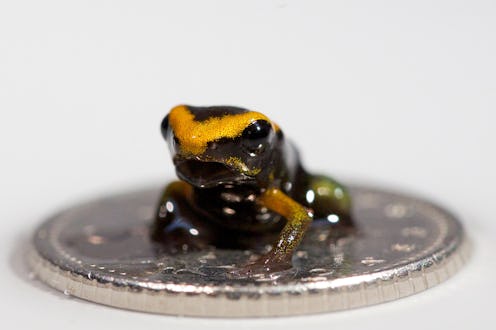The year 2015 will forever be known for its most cutthroat and all-consuming war in human history: two researchers have started a "cute off" based on who researches the cutest animals, and their feud launched #cuteoff trend on Twitter that is about to break the internet faster than Kim K's butt. Anne Hillborn and Marcella Kelly, researchers from Virginia Tech University, are responsible for this adorable mayhem. (Which just makes perfect sense; having graduated from their rival school I can attest that they are quality troublemakers.) In the past week their innocent little hashtag has inspired hundreds of cute — and, quite frankly, not so cute — pictures of animals taken by researchers across the globe.
But how exactly does one "win" a cute off? In a way, we all win, since we get to see baby animals on our dash. But the truly competitive can't settle for that alone. So why is it that we find some animals cuter than others? Researcher Konrad Lorenz formalized an explanation for why we find particular features on animals particularly squee-worthy, dubbed in 1943 the "baby schema". According to that theory (and also the wild success of any baby animal picture on the internet ever), humans are especially attracted to beings with large eyes, large craniums, and smaller jaws. These features inspire people to protect the creature, and serve as a biological indicator that they are not a threat. In fact, humans themselves have probably evolved to better fit that schema — we look more like a baby version of a gorilla than an adult one.
And here (FOR SCIENCE!), the baby schema at work:
And some other animals that snuck in because they heard there was a party (they're cute in their own ~special~ way):
That Lophostoma silvicolum is #SquadGoals, amirite? In any case, thank you, science nerds of the internet. Here's to the inevitable #CuteOff: Round 2 (if we haven't all died from the cute before then).
